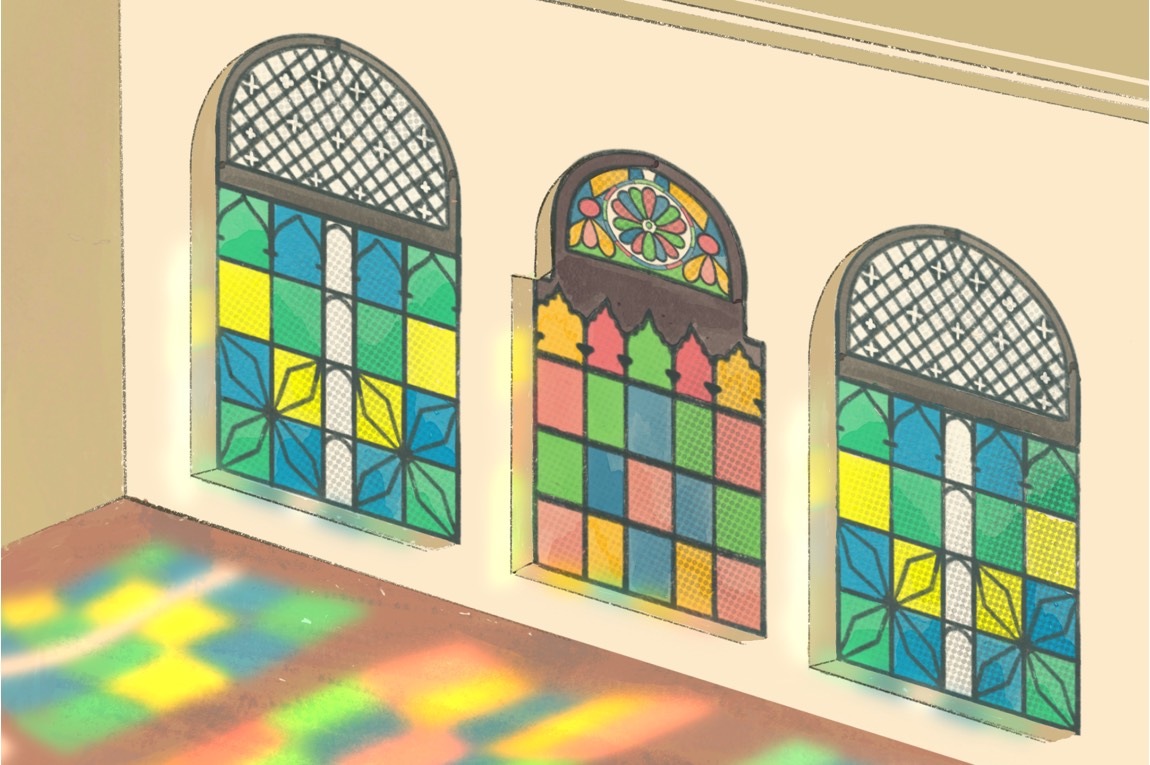The sunlight pierced through the open central courtyard, turning the spotlight on the colourful, geometric patterned tiles that covered the floors. It was the first thing that caught my eye as I entered the house.
It was January 2018, and I was in Chettinad, a region in the Sivaganga district of Tamil Nadu, for my friend’s wedding. Chettinad is known to have been the home of the Nattukottai Chettiars, primarily a wealthy business community of traders and financiers. The Chettiars travelled extensively and as a result, several global influences can be seen in the houses they built, the materials and construction methods they used, and in the overall town-planning of the region. Even today, in Chettinad mansions, you’ll find Belgian stained glass, Italian marble, Burmese teak and Moroccan chandeliers, reflective of their opulent lifestyle.
My friend’s wedding was set in Kanadukathan, about 13km away from Karaikudi, Chettinad’s principal town. As is the practice of most traditional Chettinad weddings, this one took place in my friend’s ancestral home. This was the part I was most excited about as I was getting to see a majestic Chettinad house in person, something I’d only seen photographs of and read about when I was in architecture school. Chettinad architecture typically includes multiple open-to-sky courtyards surrounded by ornate pillars, intricate wood carvings, highly embellished doors and windows, and exquisite handmade tiles. I could spot all these elements in this gorgeous house, made even more beautiful with wedding decorations and a festive spirit to match.
To enter the house, I stepped through a massive Burma teak wooden door with intricate carvings of Hindu deities, flanked by two thinnais (which are seats in built into the wall at a low height). The door opened into the large sunlit courtyard, which had rooms arranged all around. It was this tiled courtyard that I found most impressive.
The tiles that covered the floor were handmade from cement, with different geometric patterns in vibrant colour combinations of red, blue, yellow, white and black. The house, as with most large Chettinad mansions, had a series of courtyards — the main one branched off into smaller courtyards, and each of them had a different colour scheme for the tiles. In some sections, I also noticed that these tiles — called Athangudi tiles after the place in which they’re made — continued from the floor up the wall until the windowsill, which added a different look and feel to the interior space.
On a free day during the trip, I visited the village of Athangudi, not too far away, where I got a glimpse of the painstaking process of making these tiles at a couple of factories. To make a tile, a cement mixture is prepared using local soil, which is then portioned and coloured, depending on the design being used. Using a metal stencil placed over a sheet of glass, the coloured mixtures are then ladled by hand into relevant parts of the stencil. Sand is then sifted over, along with dry cement, and a thick layer of cement mortar. These tiles, still on their glass plates, are then left out to dry in the sun and immersed in water to cure for a few days in order to strengthen them and prevent breakage. These days, artisans also use free-hand designs instead of stencils. I also learnt from talking to the locals in Athangudi that initially, tiles for the interiors of Chettinad mansions were imported from countries like England and Italy, and only the affluent could afford them. Over time, when those tiles started giving way and breaking, it was difficult to fix them — that is what led to locals honing the skilled art of making these tiles, which is now famous the world over.
The visit to the tile factories left me in awe of the kind of precision and effort that goes into making each tile. These patterned Athangudi tiles, which continue to be made at the 25-odd factory units here, are a stunning backdrop for both everyday life as well as festive occasions — look a little closer, and you’ll find the stories they tell about Chettinad’s cultural identity and history too.
Our selection of stays across India, best visited for their design and style. Check in
Roshni Nandakumar is an architect & interior designer based out of Chennai. She runs her own design practice called F.I.G. Design Studio. She is on Instagram at @roshni.237.
Kashmira Sarode is a multimedia artist who creates illustrations for murals, editorials, children’s books, clothing, pottery and many more avenues with traditional as well as digital media. Her work is inspired and driven by a wide range of subjects including science, history, environment, culture, people, emotions, nature and growth. She is on Instagram at @kashmira_sarode.








